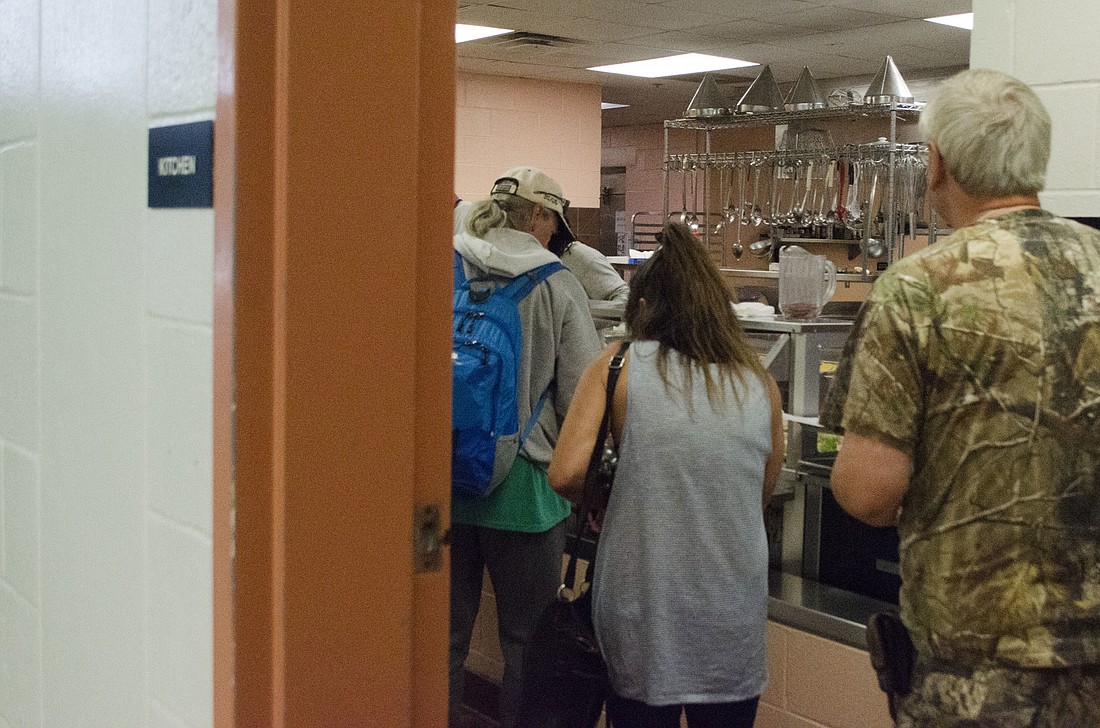- May 9, 2025
-
-
Loading

Loading

After years of conflict over the issue, agencies in the Sarasota area are coming together to combat homelessness with moves the public may soon notice.
In 2013, Sarasota County and the city of Sarasota worked to find a unified approach to end homelessness, but differing ideologies and a failed attempt to build a new homeless shelter led to a stalemate and an agreement to pursue different paths.
“When you have organizations and cities and counties all with different ideas about how this issue should be addressed, it does affect their ability to coordinate and cooperate in the most effective way,” said Ed DeMarco, director of the Suncoast Partnership to End Homelessness.
As the years went on, residents and business owners continued to wait for a solution.
In January, a one-day survey showed there were almost 900 people experiencing homelessness in Sarasota County. DeMarco said more than 3,000 people received services for homelessness in the area last year. But a report from the Florida Housing Coalition, released in April, changed the area’s approach. It outlines a path to eliminating homelessness that relies on one thing: collaboration.
“With a systems approach, the community works together to create a system with strong components that are coordinated to achieve specified end goals identified in a common agenda,” the report explains.
The Suncoast Partnership to End Homelessness has been selected as the lead agency in the continuum of care — a group of local providers, officials, homeless advocates and government staff who work together. This year, the city and the county came together to endorse and support the plan.
“Our effort with homelessness has to be what they call ‘housing first.’ Which means, let’s get this person in permanent housing as soon as possible,” DeMarco said. “Then we can wrap around services that person might need in order to stay housed.”
Going into 2018, the plan to end homelessness is taking effect.
The implementation of a coordinated entry system is a major facet of the collaborative approach.
DeMarco compares it to training a sales staff. You may have a salesperson who is experienced, and one who isn’t. Both would deal with customers differently. Their employer may teach them both a standard way they should make sales, so the customer experience doesn’t change. That’s what this system, called One by One, does.
Throughout Sarasota and Manatee counties, there will be six entry points for homeless people: Salvation Army in Manatee, Turning Point in Bradenton, Jewish Family and Children’s Services in Sarasota, Salvation Army in Sarasota, Center of Hope in Nokomis and a sixth location in North Port, which still needs board approval.
Any time these locations are open, the homeless can go in, answer a series of questions and find out what resources are available to them throughout both counties.
Whether they need a car, a driver’s license, a recovery program or another resource, by entering the One by One system, different agencies can help.
From there, they will be given temporary housing, before permanent housing can be found.
“It’s not a cure,” said Tara Booker, director of operations and grants for the Suncoast Partnership to End Homelessness. “It’s a homeless response system, and the goal for any community is that homelessness is rare, brief and nonrecurring.”
The system will be running within a few weeks in the two Sarasota locations, Booker said, and by Jan. 1 in all locations.
Though the city already has one, Sarasota County is soon to implement its own Quality of Life ordinance, pending commission approval.
The ordinance tightens restrictions about unpermitted camping on public property. The goal is to give authorities license to take people who are on public property to one of the six entry points throughout the area.
“The goal is not to arrest people,” said Wayne Applebee, the county’s homeless services director. “The goal is that we have these public resources we want them to utilize. If you’re in violation [of the ordinance] and you have nowhere else to go, we’re going to provide you transportation and very low-barrier access in getting to a safe place.”
The city implemented a similar program, but was sued by the American Civil Liberties Union. An agreement was reached in June that said the city needed to have shelter beds available for people who violated the ordinance.
County Commissioners will discuss the Quality of Life Ordinance on Nov. 14 and will also consider an agreement with the Salvation Army to provide necessary shelter beds.
The next step is finding enough affordable housing in Sarasota and Manatee counties, which DeMarco said is the biggest challenge.
The goal of the One by One system is to get people permanently housed within 30 days, but Booker isn’t sure how feasible that will be, especially at first.
“We’re in a difficult housing market in Sarasota and Manatee,” she said. “The resources are there, the case management is there. It’s locating the affordable housing.”
Sarasota City Manager Tom Barwin hopes that, with a collaborative effort underway, the housing element will follow.
“I think we’re making significant progress,” he said. “We, of course, have a way to go on the housing element of it, but for the first time [in six years here], I am confident that we will be making significant progress on that front, mostly because we now have almost every agency working toward the same coordinated strategy.”
But leaders acknowledge the streets may never be cleared of a homeless population. As Applebee put it, the system works if there is a community structure that is available to the homeless.
Still, officials are hopeful that this is the successful approach that has eluded them for years.
“It leads to getting people off the streets, into a healthier environment, which is obviously important from a sense of human compassion,” Barwin said. “But it also is helpful in … coming back to having the sense of being able to deal with problems effectively.”